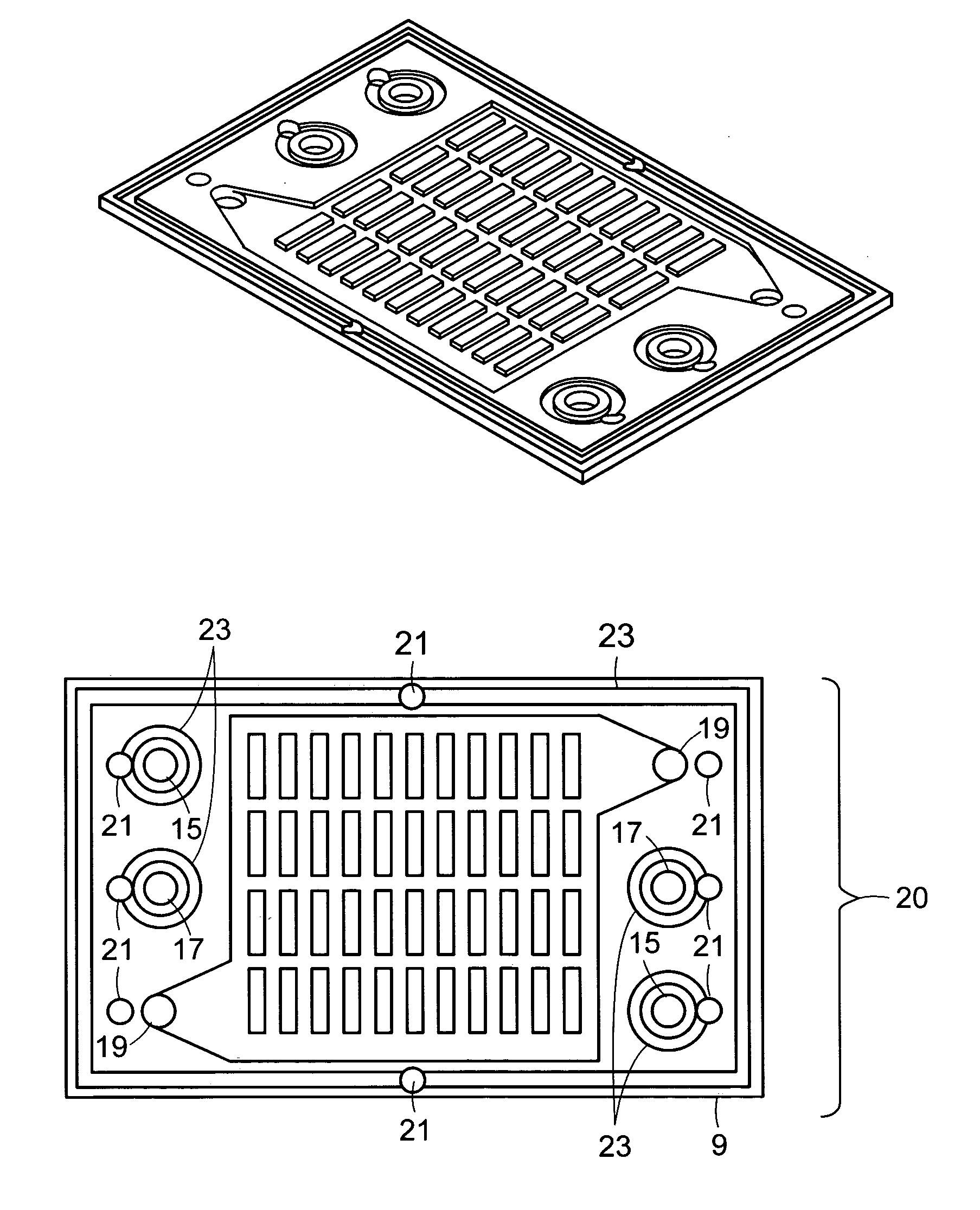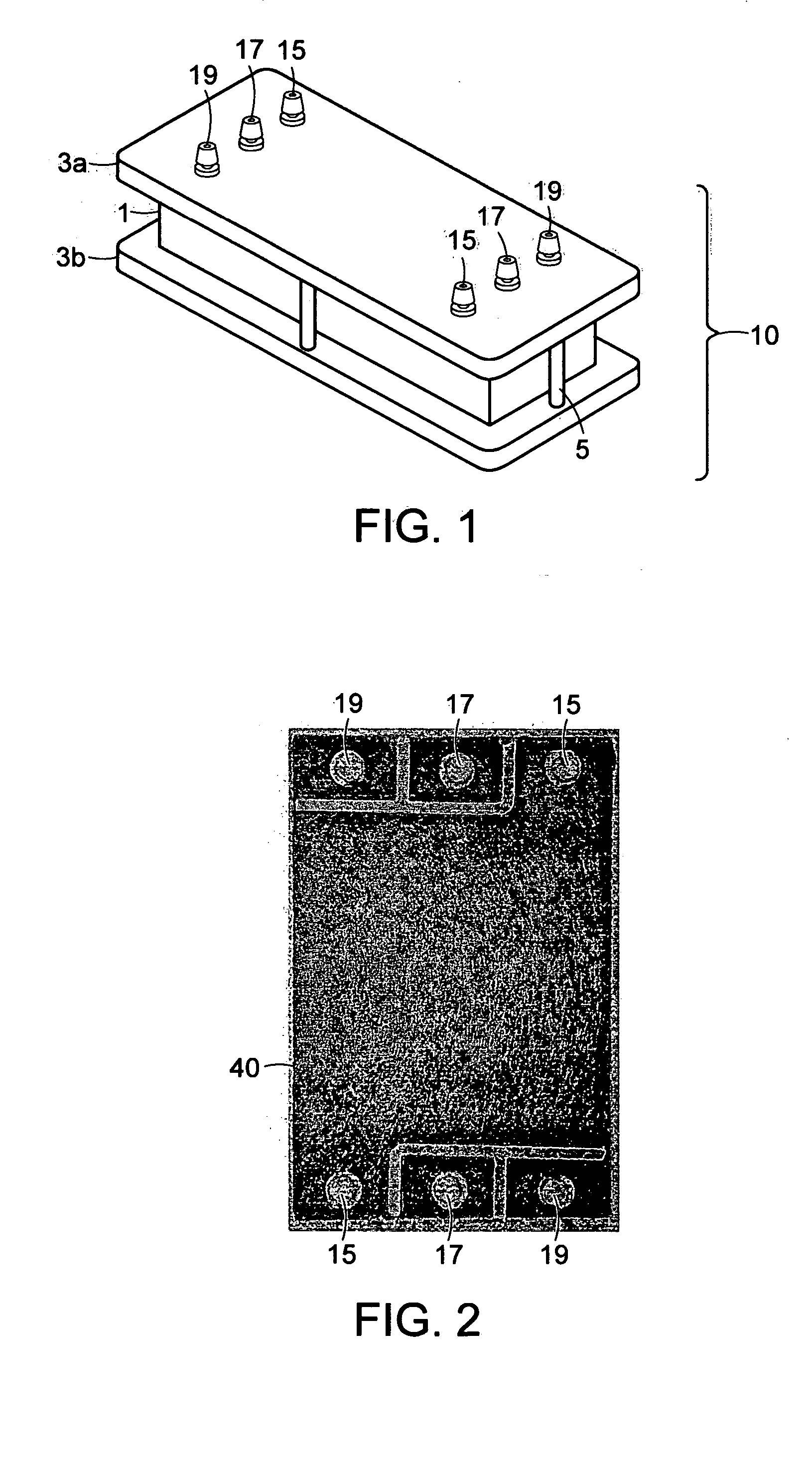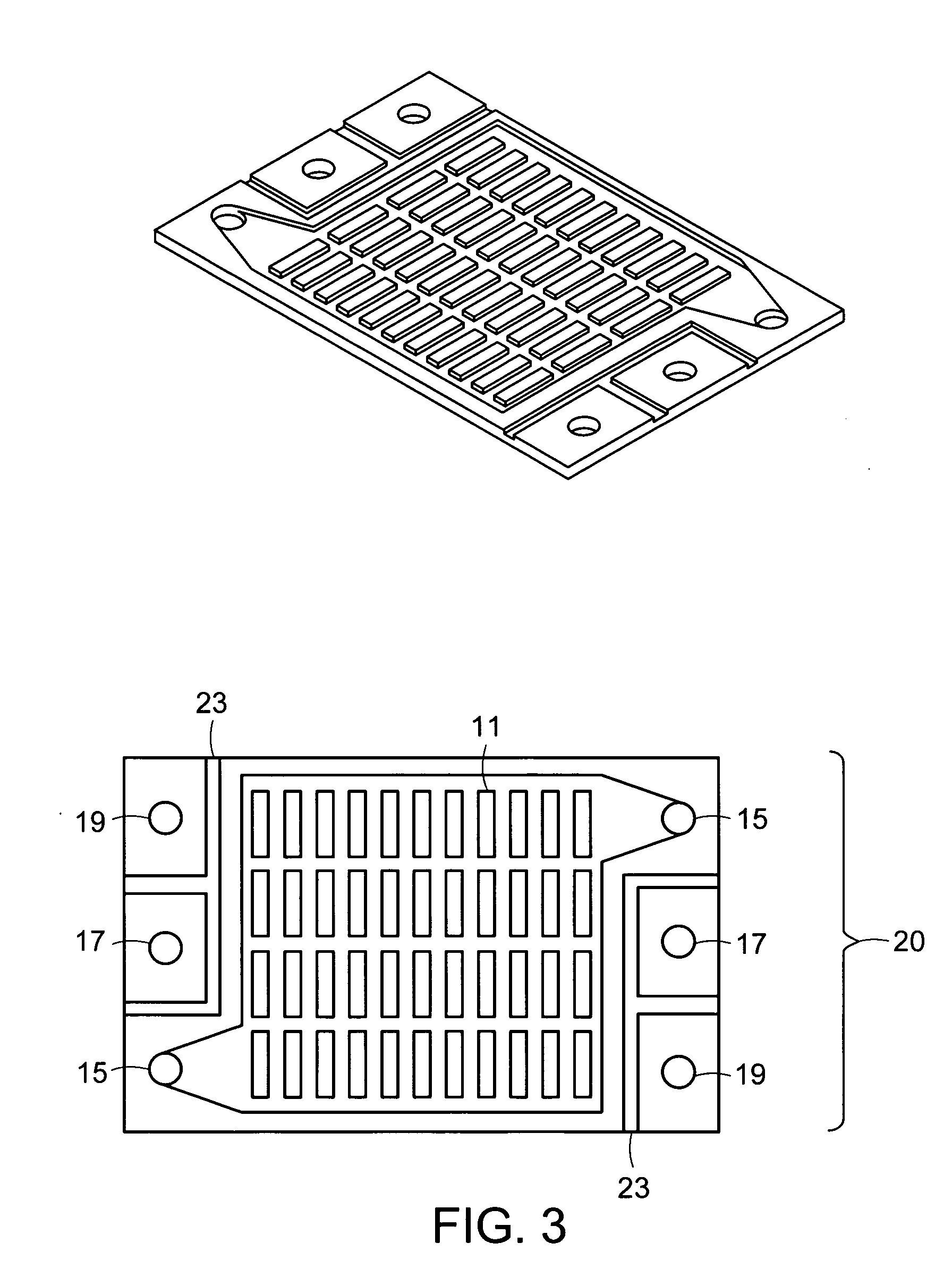Membrane based electrochemical cell stacks
- Summary
- Abstract
- Description
- Claims
- Application Information
AI Technical Summary
Benefits of technology
Problems solved by technology
Method used
Image
Examples
example 1
Vacuum Assisted Resin Transfer Molding
[0114] Using the groove and sealant hole pattern depicted in FIG. 3, bipolar plates were machined in polymer graphite composite (with the oxidant flow field shown on one side and the fuel flow field on the other). MEAs were made using known processes and cut according to the pattern shown in FIG. 7, e.g., cut nominally to the same outside dimensions as the bipolar plates with the same pattern of manifold holes. Six MEAs, five bipolar plates, and two terminal plates were assembled in the mold shown in FIG. 8 in the following order: terminal plate, MEA, bipolar plate, MEA, bipolar plate, MEA, bipolar plate, MEA, bipolar plate, MEA, bipolar plate, MEA, terminal plate. The assembly was encapsulated with the silicone resin, Silastic M, (available commercially from The Dow Corning Corporation of Midland, Mich., USA) by applying a vacuum of 23 inches Hg for approximately 90 seconds. (See also FIG. 15 for a plot of the current and voltage curve of the...
example 2
Pressure Assisted Resin Transfer Molding
[0115] A fuel cell stack was fabricated from endplates, composite MEAs and bipolar plates via encapsulation in silicone. Endplates were machined from aluminum with treaded holes corresponding to manifolds for hydrogen in and out, air in and out, and cooling in and out, as well as holes for the addition of sealant. These endplates were coated with gold to improve their contact resistance and corrosion stability, thereby functioning as endplates and current collectors. MEAs were cut from a larger 5 layer piece (membrane with catalyst and gas diffusion layer on each side) and a silicone gasket was bonded to the periphery (see FIG. 13 for example). Holes were punched in the gasket portion of the MEAs corresponding to the manifolds ports and sealant holes. Bipolar plates were machined from graphite polymer composite with two varieties; with a fuel and an oxidant flow fields [A-A′] and with a fuel flow field and a coolant flow field [A-B] or an ox...
example 3
Pressure Assisted Resin Transfer Molding II
[0119] A fuel cell stack was fabricated from endplates, composite MEAs and bipolar plates via encapsulation in silicone. Endplates were machined from ABS plastic with holes corresponding to manifolds for hydrogen in and out, air in and out, and cooling in and out, as well as holes for the addition of sealant (see figures pages 19, 21 for example). Silicone tubes were fashioned with a lip to fit within the endplate holes corresponding to the various flows (see figure page 22 for example). Current collectors fabricated from flat sheet copper coated with gold to improve their contact resistance (see figure page 20 for example). Wires were soldered to the current collectors. MEAs were cut from a larger 5 layer piece (membrane with catalyst and gas diffusion layer on each side) and a silicone gasket was bonded to the periphery (see FIG. 13 for example). Holes were punched in the gasket portion of the MEAs corresponding to the manifold ports an...
PUM
| Property | Measurement | Unit |
|---|---|---|
| Partial pressure | aaaaa | aaaaa |
| Partial pressure | aaaaa | aaaaa |
| Pressure | aaaaa | aaaaa |
Abstract
Description
Claims
Application Information
 Login to View More
Login to View More - R&D
- Intellectual Property
- Life Sciences
- Materials
- Tech Scout
- Unparalleled Data Quality
- Higher Quality Content
- 60% Fewer Hallucinations
Browse by: Latest US Patents, China's latest patents, Technical Efficacy Thesaurus, Application Domain, Technology Topic, Popular Technical Reports.
© 2025 PatSnap. All rights reserved.Legal|Privacy policy|Modern Slavery Act Transparency Statement|Sitemap|About US| Contact US: help@patsnap.com



